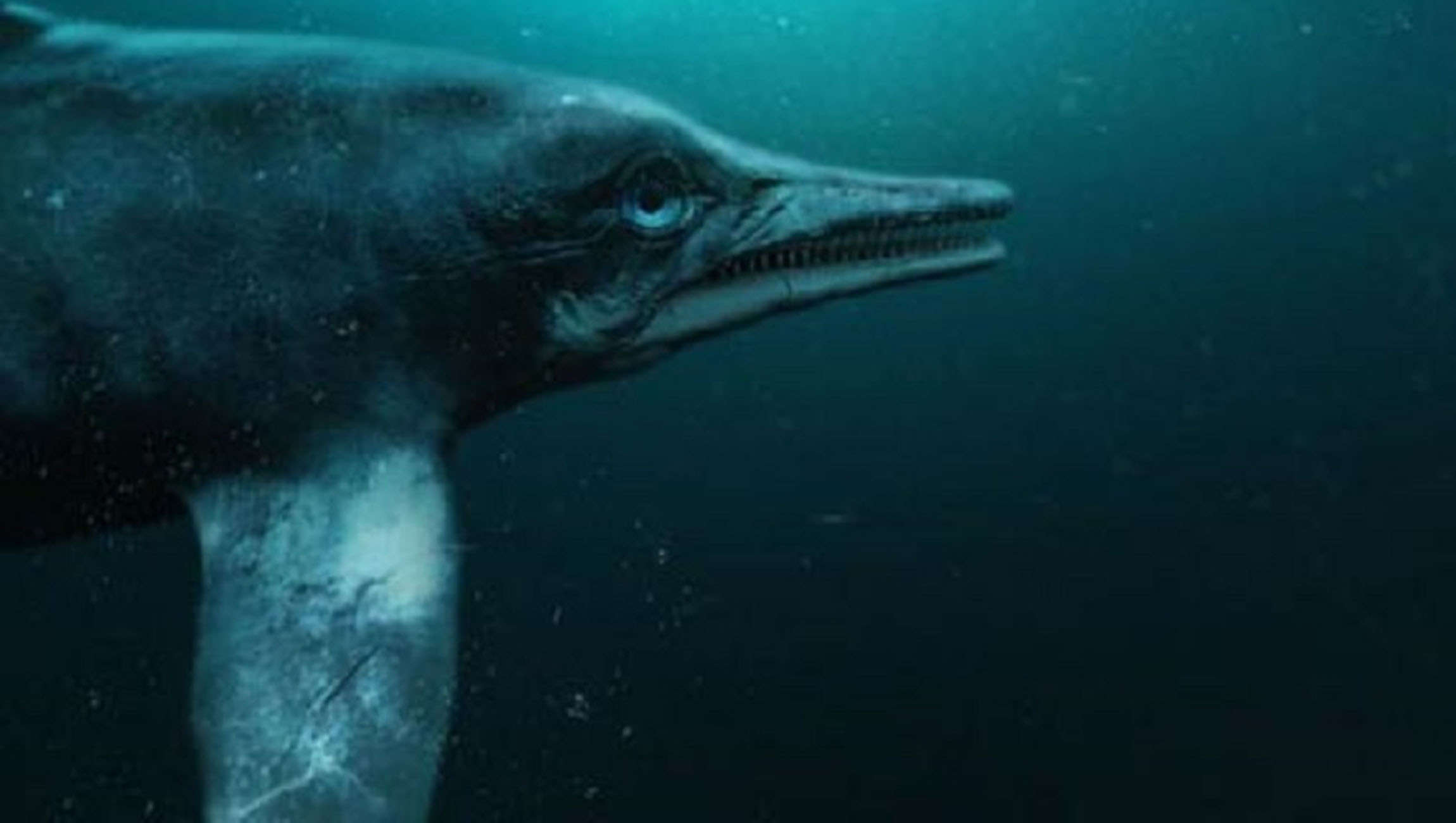Create a free profile to get unlimited access to exclusive videos, sweepstakes, and more!
Triassic sea monster devoured another sea monster, proof that even predators were on the menu

Because legends of the Kraken bringing down unfortunate ships aren’t scary enough, prehistoric sea monsters that actually existed used to eat other sea monsters.
Ichthyosaurs (brought to life in Attenborough and the Sea Dragon, above) were one of the terrors that ruled Triassic seas around 240 million years ago. With a name that literally translates to “fish lizard”, they were ravenous apex predators that apparently thought nothing of picking on something their own size. The ichthyosaur Guizhouichthyosaurus terrorized the waters of China, but while smaller prey had something to be afraid of, there was another creature that met a ghastly fate. One of these beasts must have been craving something more substantial for dinner.
The thalattosaur Xinpusaurus xingyiensis, which met its doom in the icthyosaur’s jaws, was almost as huge as its attacker.
Megapredation (megafauna feeding on megafauna) was not unusual during the age of the dinosaurs. From the tooth marks of an enormous ancient crocodilian found on dinosaur bones. to suspected megafuanal bones in the stomachs of other massive predators, to scavengers that cannibalized their own kind when food was scarce, fossils that infer this phenomenon have been unearthed before, but nothing like this. The Guizhouichthyosaurus fossil studied by paleontologist Ryosuke Motani and his research team revealed an articulated partial skeleton of X. xingyiensis, the first undeniable — and oldest ever—proof of monsters whose insatiable appetites led them to other monsters.
“We have never found articulated remains of a large reptile in the stomach of gigantic predators from the age of dinosaurs, such as marine reptiles and dinosaurs,” said Motani, who recently co-authored a study recently published in iScience, in a press release. “We always guessed from tooth shape and jaw design that these predators must have fed on large prey, but now we have direct evidence that they did.”
When the Guizhouichthyosaurus fossil first came to the surface after hundreds of millions of years, a strange mass of bones was noticed bulging from its abdomen. This was found to be a bromalite, or fossilized digestive contents, that was the surprisingly articulated skeleton of the thalattosuar that ended up being its last meal, since further study concluded that the ichthyosuar met its own death soon after swallowing so much. The size of the bromalite was unusual for something thought to feed on squidlike cephalopods and didn’t exactly have knives for teeth.
The evidence also suggests that megafaunal predation first appeared during the Mid-Triassic, and because there were so many other gargantuan things with teeth that were virtually inescapable, hunters became the hunted more often than previously thought. But how did the 15-foot ichthyosaur manage to gulp down the 13-foot thalattosaur? It is thought to have operated much like other air-breathing creatures that lurk in the water, such as orcas, leopard seals, alligators and crocodiles that jerk and twist their prey in a series of grisly “death rolls” to tear it apart.
“Although grasping by teeth is typically thought to be effective when feeding on cephalopods and fish, it also constitutes an effective mechanism when feeding on air-breathing prey in water,” Motani said in the study.
Guizhouichthyosaurus is thought to have dragged the thalattosaur, also an air-breathing species, to the surface, which is part of the reason it was highly unlikely that it scavenged the carcass of the thalattosaur on the ocean floor. It probably would have then submerged it so it would weaken from lack oxygen. The icthyosaur would have then thrashed about to dismember its prey, whose remains were missing a head and tail. The tail had apparently drifted from the scene since it had been fossilized nearby. Why the entire body had not been ingested remains unclear, but it could be possible that another vicious carnivore went for the thalattosaur’s head after it had been decapitated. You know that they say about blood in the water.
In the end, maybe Guizhouichthyosaurus really did bite off more than it could chew and succumbed before it could eat any more. Could the sheer size of the thalattosuar done fatal damage to its stomach and other internal organs? Did the bones end up puncturing the stomach and even skin of the ichthyosaur? Nobody knows for sure.
Remember that next time you’re thinking about scarfing down an entire pizza at 3 a.m.














